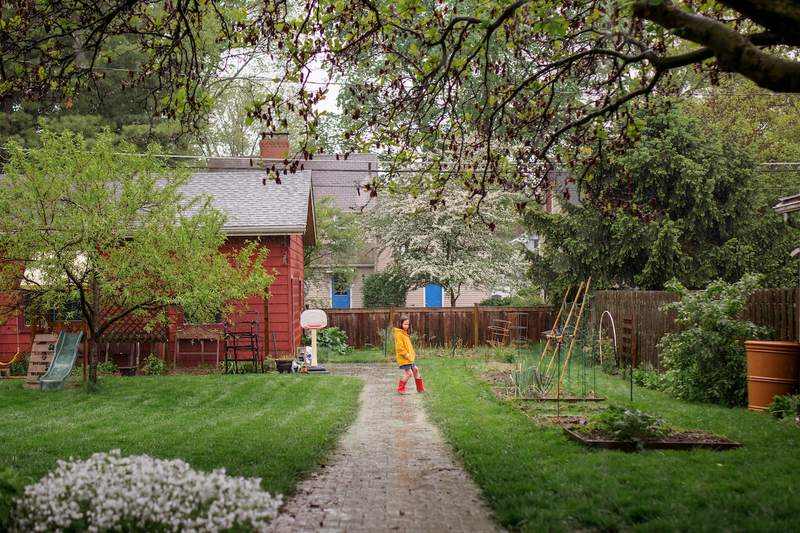Down payment assistance programs help aspiring home buyers afford the upfront costs of buying a home. Typically administered by state or local housing finance agencies and nonprofit organizations, DPA programs offer a mix of grants, deferred-payment loans, forgivable loans and mortgage tax credit certificates to eligible buyers.
While DPA programs are common, many buyers are confused about who can qualify for assistance and how they work. Read on to learn about some of the most persistent down payment assistance program myths, why they endure, and the facts about applying for and getting DPA.
Key Takeaways:
- Down payment assistance programs are easier to qualify for than buyers often expect and are compatible with many loan types.
- Grants and loans from DPA programs are widely available from state and local governments, nonprofit groups and mortgage lenders.
- While some DPA loans must be paid back, grants and forgivable loans are also offered to eligible applicants.
Myth #1: Only Low-Income Buyers Qualify
Perhaps the most common assumption about down payment assistance programs is that they’re only for buyers with very low incomes.
“DPA programs of the past were geared toward lower-income buyers, and that perception has just stuck,” says Marty Zankich, owner and Director of the San Jose, California-based Chamberlin Real Estate School. “In reality, some of these loan programs will accept applicants with incomes up to $100,000.”
C.L. Mike Schmidt, a personal finance expert and attorney with Schmidt & Clark LLP in Washington, D.C., echoes those thoughts. “These programs often have income limits, but they are usually set at levels that cover a broad range of households,” he says. “There are plenty of options for moderate to middle-income earners. So, don’t write yourself off based solely on your income bracket.”
J. Keith Baker, a banking and finance professor at Dallas College’s North Lake Campus in Irving, Texas, cites a Texas DPA program as proof that you don’t necessarily need a low income to qualify. “A program like the Home Sweet Texas Home Loan provides assistance of up to 5% of the loan amount,” he says. “There’s an upper-income limitation for qualified buyers of $97,000, which is not considered a lower income by most definitions.”
What’s Your Goal?
Buy A Home
Discover mortgage options that fit your unique financial needs.

Refinance
Refinance your mortgage to have more money for what matters.
Tap Into Equity
Use your home’s equity and unlock cash to achieve your goals.
Myth #2: Only First-Time Buyers Qualify
While plenty of DPAs are first-time home buyer assistance programs, there are also plenty of programs designed for repeat buyers.
Most DPA programs are open to anyone who meets the eligibility criteria, says Rose Krieger, a Spokane, Washington-based Senior Home Loan Specialist for Churchill Mortgage. “Typically, eligibility is determined based on income and the location of the purchase. These programs are not always exclusively reserved for first-time buyers,” she says.
“Eligibility often stipulates that you can’t have owned a home within a recent time frame, such as the last three years,” says Ryan Nelson, Founder of RentalRealEstate in Houston.
Ready To Become A Homeowner?
Get matched with a lender that can help you find the right mortgage.
Myth #3: Only Certain Types Of Homes In Certain Neighborhoods Qualify
While it’s true that some programs may target specific regions or aim to revitalize particular communities, there are plenty of options available for buying a residence in a wide array of locations.
“Whether you’re looking to buy in an urban center, a suburban neighborhood or a rural area, there’s likely a down payment assistance program out there that can help you make your dream of homeownership a reality,” Schmidt says.
“People mistakenly believe only older or less expensive properties qualify,” Nelson says. “In reality, most DPAs can be used for various homes, including new construction, as long as the property meets specific appraisal guidelines and is within the program’s purchase price limits.”
Take The First Step To Buying A Home
Find a lender that will work with your unique financial situation.
Myth #4: The Programs Are Too Difficult To Navigate Or Qualify For
Yes, you’ll need to look for DPA programs to apply to, and that takes time. But most programs don’t require more information or documents than you need to apply for a mortgage anyway. And programs are upfront about who’s eligible and what’s required to get down payment assistance.
“The application process may seem daunting, but experienced loan officers and housing counselors can provide valuable guidance,” Nelson says. “Plus, many programs have streamlined their processes for greater accessibility.”
Myth #5: You Can Only Get Help Through Government Agencies
Local, state and federal governments back many DPA programs – but they’re not the only source of down payment assistance.
Plenty of programs are offered by various organizations, employers and even banks and lenders. Bank of America offers the America’s Home Grant program, which provides up to $7,500 and lender credits toward closing costs, and the Down Payment Grant program, which provides up to $10,000 in down payment help. Another major lender, Chase Bank, has a Home Buyer Grant program that provides up to $7,500 to qualified applicants.
“Most DPA programs remain funded by state and local governments. However, there are also nonprofit groups and even some charities that have DPA programs,” Zankich says.
Myth #6: It’s Too Good To Be True
Many folks are accustomed to disregarding offers that promise zero-interest loans or grants that don’t have to be repaid – and, in many instances, are correct to do so. But down payment assistance offered by government agencies and established financial institutions do legitimately offer such terms.
“Down payment assistance can seem unbelievably generous, leading to skepticism,” Nelson says. “However, these programs exist to promote homeownership and are often supported by organizations aiming to build stronger communities.”
Of course, there are a few caveats.
“While some assistance programs forgive part or all the aid provided, many require repayment, often at minimal or no interest,” Krieger says. “Typically, recipients must also participate in a home buyer seminar, which not only educates them on the buying process but also equips them to handle homeownership challenges.”
Myth #7: Programs Are No Longer Funded
The economy’s taken some hits in recent years – inflation, rising home costs, decaying infrastructure – leading some folks to assume funding for DPA programs may be limited or already used up.
While economies have good and bad years, DPA programs continue to be funded and are available to a wide range of home buyers.
“The reality is that countless DPAs are actively funded with the goal of making homeownership more attainable,” Nelson says.
While most DPA programs have an annual budget for aid, “I haven’t encountered instances where the funds were depleted,” Krieger says.
Myth #8: Assistance Makes It More Difficult To Get A Loan
A fear shared by many home buyers is that needing down payment assistance may make it harder to get a mortgage.
“Getting a DPA doesn’t impact your ability to get a home loan,” says Zankich. “Your lender will offer you a program if you fit the criteria. And with market conditions the way they are now, more buyers than ever are taking advantage of DPAs to afford the purchase of a home.”
Making a sufficient down payment – no matter how it’s funded – makes you a safer risk to lenders, says Nelson.
Myth #9: Only FHA Loans Are Compatible
DPA programs work with all types of mortgages – conventional, VA and USDA included – and aren’t limited only to FHA loans.
“Generally, the loan types will adhere to the guidelines of the agency overseeing the program you qualify for,” Krieger says.
Most DPA programs target FHA loan borrowers because these loans have low down payment requirements and are more lenient with credit scores.
Myth #10: Assistance Requires More Time To Close
Even if you think down payment assistance can help you afford a home, you may be concerned that having to apply for another program and submitting the paperwork for underwriting could take more time and push back the closing date for your home.
It’s true that DPA programs sometimes take longer to close, but often that’s dependent on the type of loan you’re pursuing, Zankich says. “If it’s an FHA or VA loan, those take a little more time,” he says. “But I’ve seen buyers with DPAs close in 30 days or less, just like other home buyers.”
“In many state programs, there are a few additional steps involving review of loan details by the state agency, but this usually doesn’t extend beyond a week,” Krieger says.
Myth #11: The Loans Are Never Forgiven
While many DPA programs offer grants, it’s also common for them to provide deferred-payment loans. That means you don’t have to repay it now – but you will. While some loans require repayment when you sell your home, refinance your mortgage, or pay off your loan, many programs forgive such loans if you meet specific conditions.
“Many DPAs offer forgivable loans,” Nelson says. “If you remain in the home for a designated period, you won’t have to repay the assistance.”
Be aware, however, that some DPA loans have to be partially or fully repaid; others are deferred, which means repayment is not needed until you sell your home.
Myth #12: Sellers Won’t Accept Layered Financing
Layered financing is when the borrower uses multiple funding sources to buy a home. When purchasing a home, this typically means the buyer is using down payment assistance along with a primary mortgage, cash savings and credits or gift money for closing costs.
This arrangement doesn’t affect the seller, as lenders follow standard financing guidelines for FHA, conventional, USDA and VA loans.
“Some sellers might hesitate due to perceived complexity,” Nelson says. “However, educated Realtors and loan officers can reassure sellers of the process and its prevalence.”
Myth #13: Making A Larger Down Payment With Your Own Money Is Better
In a perfect world, you’d have enough saved up to afford a down payment without assistance. This would allow you to borrow less and possibly pay a lower interest rate.
But high home costs make saving up enough on your own difficult. DPA programs allow you to buy and own a home now instead of waiting until you have enough saved up. If the DPA comes as a grant, and you don’t have to repay it, it’s all the better.
“DPAs can help you buy sooner, freeing up cash for moving costs, renovations or emergencies,” says Nelson.
FAQ
Can you use down payment assistance funds to buy an investment property?
The Bottom Line
Down payment assistance is a lot more flexible, generous and easier to qualify for than many people think. Finding a DPA program you are eligible for can make it possible for you to buy a home sooner and make the purchase more affordable. It’s essential to learn how the process really works so you can take advantage of any programs that can help you achieve your goal of buying a home.
More From Quicken Loans:
- Down Payment Assistance: How It Works And How To Find A Program For You
- First-Time Home Buyer Assistance Programs: A Guide
- Pros And Cons Of Down Payment Assistance
- How To Get Down Payment Assistance – A Home Buyer’s Guide
- Down Payment Assistance For Manufactured Homes
- Texas First-Time Home Buyer Assistance Programs
- Everything To Know About FHA Down Payment Assistance

Erik J. Martin
Erik J. Martin is a graduate of Loyola University Chicago and a freelance writer whose articles have been featured in AARP: The Magazine, Reader's Digest, The Costco Connection, The Chicago Tribune, Los Angeles Times and other publications. He often writes on topics related to real estate, personal finance, technology, health care, insurance and entertainment. He also publishes several blogs, including Martinspiration.com and Cineversegroup.com, and hosts the Cineversary podcast.












